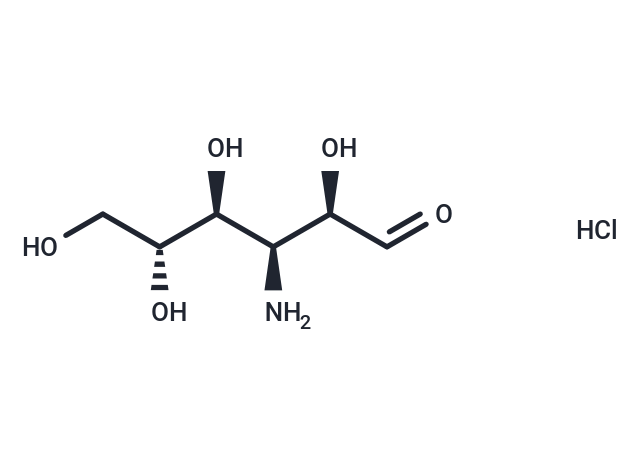Shopping Cart
Remove All Your shopping cart is currently empty
Your shopping cart is currently empty
Kanosamine hydrochloride is an antibiotic that inhibits the growth of plant-pathogenic oomycetes, certain fungi, and a few bacterial species. It shows inhibitory activity against Phytophthora medicaginis M2913 and Aphanomyces euteiches WI-98 with minimum inhibitory concentrations (MICs) of 25 and 60 μg/mL, respectively.

| Pack Size | Price | USA Warehouse | Global Warehouse | Quantity |
|---|---|---|---|---|
| 1 mg | Inquiry | 35 days | 35 days | |
| 5 mg | Inquiry | 35 days | 35 days | |
| 10 mg | Inquiry | 35 days | 35 days | |
| 25 mg | Inquiry | 35 days | 35 days |
| Description | Kanosamine hydrochloride is an antibiotic that inhibits the growth of plant-pathogenic oomycetes, certain fungi, and a few bacterial species. It shows inhibitory activity against Phytophthora medicaginis M2913 and Aphanomyces euteiches WI-98 with minimum inhibitory concentrations (MICs) of 25 and 60 μg/mL, respectively. |
| Targets&IC50 | Aphanomyces euteiches WI-98: 60 µg/mL , Phytophthora medicaginis M2913:(MIC)25 µg/mL |
| In vitro | Kanosamine demonstrates inhibitory effects on select bacterial species and exhibits moderate inhibition against certain fungi, specifically targeting pathogens of plants. Its accumulation in B. cereus UW85 culture supernatants peaks during sporulation and is further enhanced by ferric iron addition, yet diminished with phosphate in rich media. Remarkably, kanosamine's accumulation surges over 300% with the introduction of alfalfa seedling exudate into minimal medium. Notably, kanosamine also restricts the growth of Saccharomyces cerevisiae and various human pathogenic fungi, including Candida albicans, leading to significant morphological alterations, septum formation inhibition, and cell agglutination. Its potent effect on plant-pathogenic oomycetes is evident, with Phytophthora medicaginis M2913 being exceptionally sensitive, whereas Pythium aphanidermatum Pa138 and Pythium torulosum A25a display lesser sensitivity, and Aphanomyces euteiches WI-98 exhibits intermediate sensitivity. Oomycetes show greater vulnerability to kanosamine at pH 7.0 compared to pH 5.6. |
| Molecular Weight | 215.63 |
| Formula | C6H14ClNO5 |
| Cas No. | 57649-10-2 |
| Relative Density. | no data available |
| Storage | Powder: -20°C for 3 years | In solvent: -80°C for 1 year | Shipping with blue ice/Shipping at ambient temperature. |
| Size | Quantity | Unit Price | Amount | Operation |
|---|

Copyright © 2015-2025 TargetMol Chemicals Inc. All Rights Reserved.